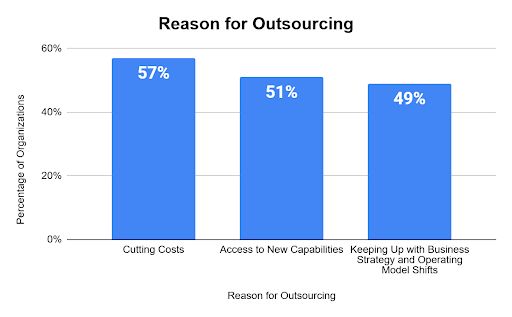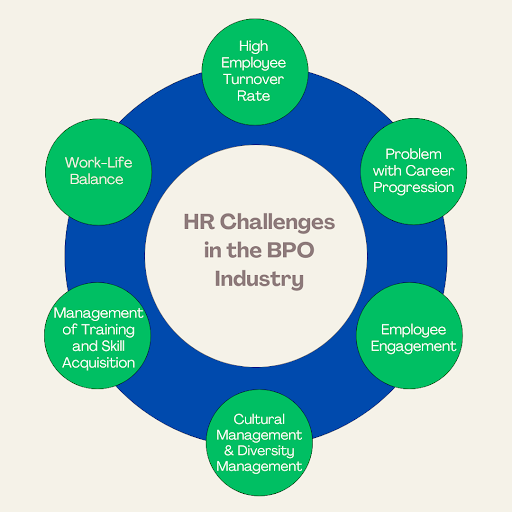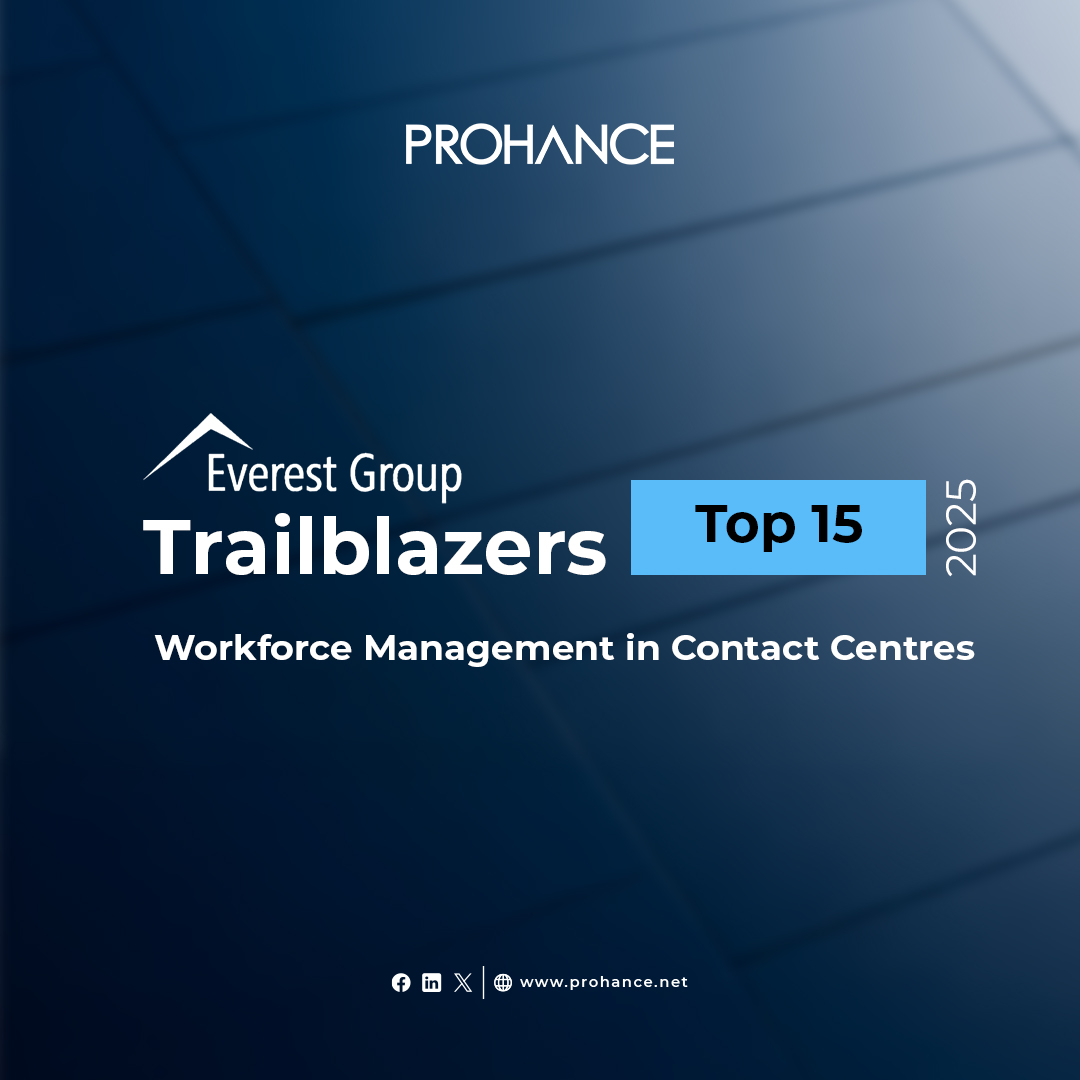Top HR Challenges in the BPO Industry and How to Overcome Them?
Table of contents
The business process outsourcing (BPO) industry has made a huge leap and has grown into a global force that provides services such as IT, accounting, digital marketing, and customer services. However, along with its vast benefits, the industry is faced with unique challenges, particularly in relation to manpower management.
For BPO’s HR managers, they have to deal with matters of high turnover, employee dissatisfaction, and instant efforts to build and maintain candidate motivation and loyalty that breeds within a mostly mobile population.
This blog looks at some of the BPO HR challenges and offers solutions that can effectively be used to tackle them.
What is the BPO Industry?
The BPO industry involves the outsourcing of certain business functions to another company. This means that they will remain competent in their main business pursuits and at the same time reap the benefits of cost efficient operations and highly skilled human resources.
Key facts about BPO:
- IT services are the most widely outsourced business processes, with 37% of the industry focusing on IT services.
- Other major outsourcing industries include digital marketing tasks (34%), lead generation and cold calling.
- About 300,000 jobs are outsourced in the United States each year.

Even as the BPO industry stimulates the economies of different countries, it is also plagued with BPO HR challenges such as managing employees from different cultures, maintaining employee engagement and coping with employee attrition.
HR Challenges in the BPO Industry

With issues related to cultural variations, high turnover rates, and shifting expectations, managing human resources in the BPO industry becomes a challenge. Here are six common HR challenges in the BPO industry sector:
- High Employee Turnover Rate
- Disillusionment with Career Progression
- Employee Engagement
- Cultural Management and Diversity Management
- Management of Training and Skill Acquisition
- Work-Life Balance
Here’s a detailed description:
High Employee Turnover Rate
For the past decade, employers claim that turnover rates in employment in the BPO sector are around 30–35%, reaching a high of 55%. It is not only costly in monetary terms to replace employees but also negatively impacts the spirit and coherence of teams.
Disillusionment with Career Progression
A significant number of workers do not anticipate working in BPO long-term. Only one out of eight workers believe it is a sustainable career. This line of thought makes it difficult for HR to retain employees as well as to inculcate belongingness.
Employee Engagement
Due to the exhaustive and mundane work dealt with, like in lead generation and customer service processes, even engaging employees becomes a battle. The factor that contributes to low engagement is boredom in doing the same work on a continuous basis.
Cultural Management and Diversity Management
The multinational nature of BPO industries results in the diversity of employees. HR practitioners should be able to understand and appreciate working with diverse groups to foster team collaboration.
Management of Training and Skill Acquisition
The need for regular upgrades is non-disputable given the fact that processes undergo changes all the time. The key challenge though is to provide the training for all activities and ensure that production is not affected.
Work-Life Balance
Unfortunately for the employees, the employees working with BPOs which are operational throughout the day and night catering clients globally, hinders their balance between work and personal life causing burnout and increases attrition rates.
Overcoming HR Challenges in BPOs
It is worth noting that BPO workforce management challenges cannot be resolved in a snap of the fingers but require deliberate efforts. Some of these strategies target the core problems:
Implementing Robust Recruitment Practices
For human HR purposes, much emphasis should be placed on recruiting candidates who align with the organization’s culture and have long-term potential. A well-defined onboarding process is a viable option to at least moderately mitigate early attrition and hence provide an effective integration into the company.
Enhancing Career Pathways
By offering employees growth opportunities and regular performance helps them see promising future growth within the organization along with the regular rotations of duties.
Building a Positive Work Environment
Workplace culture that extends a sense of belonging especially to underrepresented areas can lead to high self engagement among employees. The self conducted team bonding events, regular feedbacks or recognition programs can tremendously improve staff morale.
Investing in Training Programs
With the introduction of e-platforms, workshops and even certifications that support continuous learning, employees are kept in the know and encouraged. The self willing enhancement also proves beneficial to the organization through the uplifted standards of service delivery.
Promoting Work-Life Balance
Management of chronically disordered staff can be made possible through the provision of proper flexible working hours, mental health support, and adequate wellness programs. Equally, it is important to encourage staff to take breaks and utilize their annual leave.
Leveraging Technology
More recent HR software solutions like ProHance allow average companies to track performance, manage attendance, payroll and even gain insightful information about employee sentiments and engagement levels using AI powered tools.
Practical Tips for Overcoming BPO Challenges
| Metric | Description | Why It Matters |
| Attrition Rate | Percentage of employees leaving over a given period. | High rates signal dissatisfaction or process inefficiencies. |
| Employee Productivity | Tasks completed versus time spent. | Helps identify inefficiencies and improve workload distribution. |
| Training ROI | Monetary value of post-training benefits versus total training cost. | Ensures that training programs are cost-effective and impactful. |
| Internal Mobility Rate | Number of internal promotions or role changes. | Indicates a healthy career progression framework within the company. |
| Employee Engagement Levels | Engagement surveys or sentiment analysis results. | Directly tied to productivity, satisfaction, and retention. |
As necessary as it is to incorporate these solutions, human resource managers encounter some real practical challenges during the actual implementation:
Budget Constraints
Most BPO companies are resource strained because managing the clients always comes first.Convincing stakeholders to invest in HR programs requires presenting a clear ROI.
Resistance to Change
New policies and technologies implemented on such companies are always met with substantial opposition from employees as well as management. Change management should be embraced by communicating the need for the change and training employees on the new policies and technologies.
Scalability
Adapting HR solutions to suit a more diverse or internationalized workforce may be a challenge. Implementing cloud-based HR systems is a better alternative to traditional systems.
Maintaining Consistency
Ensuring uniform implementation of HR policies across different locations is a challenge due to geography barriers, especially in BPO. The issues of not having a consistent policy can be tackled using prescribed procedures and re-centralized control.
| HR Challenge in BPO | ProHance Solution | Benefits |
| High Attrition Rates | ProHance analyzes employee sentiment and tracks factors leading to turnover. | Helps HR implement proactive retention strategies, such as engagement programs. |
| Employee Productivity Measurement | Provides time tracking and activity monitoring tools to assess individual and team productivity. | Ensures resources are utilized efficiently and identifies areas for improvement. |
| Skill Gaps and Employee Development | Skill gap analysis tools match current employee capabilities against future requirements. | Supports targeted training programs and upskilling, ensuring a future-ready workforce. |
| Resource Allocation Inefficiencies | Monitors work distribution and identifies bottlenecks through advanced analytics and workload tracking. | Optimizes team workload distribution, enhancing efficiency and effectiveness. |
| Recruitment Challenges | Streamlines recruitment with candidate sourcing tools and recruitment data analysis. | Reduces time-to-hire and improves the quality of hires by identifying key recruitment gaps. |
| Employee Engagement | Tracks workforce engagement levels and provides actionable insights to boost morale and productivity. | Enhances overall workplace satisfaction, leading to improved performance and retention rates. |
Also Read: Guide to Tackling Overtime in BPO and IT Companies
Conclusion
The BPO sector is the champion in the global outsourcing market, striving to improve cost efficiency and operational effectiveness for enterprises globally. Different BPO HR challenges including attrition rate, employee’s dissatisfaction and cultural integration however, need to be addressed. Offering strong solutions that are strategic and preemptive in nature to HR BPO issues is critical. HR teams and business management can focus on enhanced recruitment, career development and employee health to create a well-motivated workforce that serves the organization’s purpose.
Frequently Asked Question
Q1. What is the BPO industry?
The BPO industry consists of handing over a business process to a third-party firm and includes IT, customer care, and digital marketing services that help companies manage their business processes in a cost effective manner.
Q2. Why do many of the workers in the BPO industry quit?
Reasons for high attrition levels range from stagnation in career advancement opportunities, repetitive nature of work and poor work-life balance. These problems inhibit employees from imagining a long term perspective in a BPO job.
Q3. What can be done by BPO companies to reduce the rate of employees leaving the company?
Such programs may include; career development opportunities, establishing a positive environment, work life balance, and policies allowing for flexible working hours and wellness programs.
Q4. What are the biggest HR challenges in BPO?
The major constraints are there in terms of attrition rates, cultural issues, motivation of employees, opportunities for skill enhancement, and a healthy work-life balance.
Q5. What technologies do you think can help in addressing BPO HR issues?
HR tools like tracking performance, e-learning, and AI analytics can optimize the management of the workforce and increase their engagement, which, in the end, strengthens the overall efficiency of HR functions. If dealt with properly, BPO companies are able to not only retain the talent but strategically build a talent pool that they can utilize for their advancement.






